

Originally posted March 17, 2017
I'm bored with talking about whole guns, so this week I'm going to give you chapter and verse on a specific class of gun part, the evolution and full implications of which are, I think, sadly misunderstood and underappreciated by the bulk of people out there: the shoulder stock.

Most people, when they think of shoulder stocks at all, think of them as simply a means of bracing a two-handed long arm for improved accuracy and control. It seems like the intuitive thing to do: the shoulder is a sturdy and structurally well-braced part of the shooter's anatomy, the natural choice of places to brace a firearm against, and it's conveniently positioned near both the hand and the eye—as opposed to, say, the thigh, which is also a strong body part but is inconveniently far away from any useful sightline unless you've got something really unconventional going on with the placement of your sensory apparatus.
There's so much more to the humble stock than just support and balance, though. They can also be used for storage! Many early muzzle-loading firearms had compartments in their shoulder stocks for carrying supplies, and a lot of World War II-era military rifles kept their cleaning and maintenance stuff in there. Some rifles and shotguns even have some backup ammunition stowage in there, and more than one early cartridge repeater's tube magazine ran through the stock rather than being up front. There's a fair volume inside most stocks, and with modern materials, not all of that volume needs to be structural. Nowadays, the sky's the limit for what you could stash in there. Survival equipment, field rations, good-luck charms, emergency backup porn...
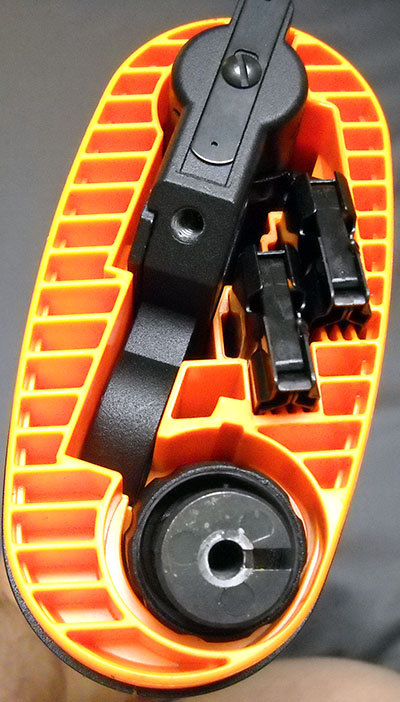
... heck, this one's got a whole rifle in it.
Joking aside, our Gun of the Week this week is one of those ones that's had several names and been made by several manufacturers in its lifetime. This particular one is a Henry U.S. Survival Rifle, because the modern Henry Repeating Arms Company (no relation to the 19th-century one, as usual) never misses an opportunity to throw "U.S." into its marketing materials, but the design originally saw the light of day in the 1950s as the ArmaLite AR-7 Explorer.
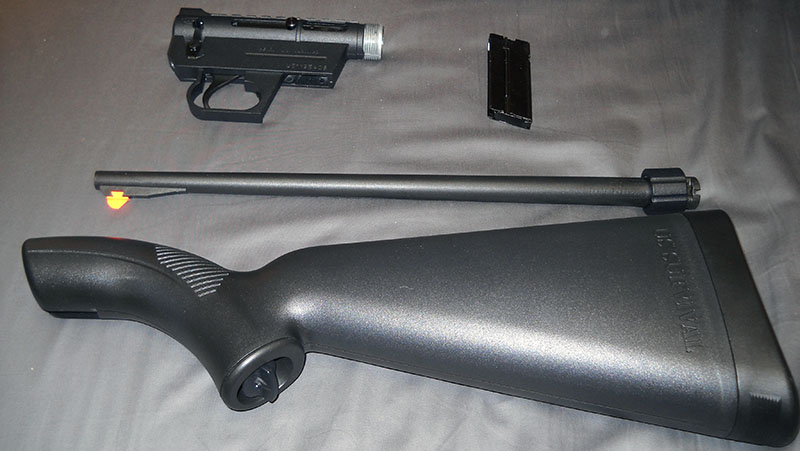
I daresay most people nowadays know ArmaLite as the original developers of the AR-15 automatic rifle, which was licensed to Colt and adopted by the United States Army as the M16, and which, in various third-party guises, is now basically the free hydrogen of the Western tactical-wannabe long-arms market. They're kind of an archetypal hard-luck firearms manufacturer story, always angling for the big military contracts and never quite getting them for various reasons. The AR-15 is a prime example of that syndrome; it was developed from the 7.62×51mm NATO AR-10, which was itself a failed contender in the early-'50s trials to replace the M1 Garand (it lost out to the Springfield Armory's T44, which became the M14), and ended up making a ton of bank for Colt because the failure of the AR-10 bid prompted ArmaLite's management to sell off the designs.
The AR-7 is the result of another, similar run of bad luck and bad timing for ArmaLite. Exactly how that came to be will take a bit of background.
In the early Cold War—say, from the development of Soviet atomic weapons in the late 1940s into the middle 1960s—the intercontinental ballistic missile did not yet exist, so the United States military's principal "strategic deterrent" against Soviet nuclear attack was the Air Force's fleet of long-range bombers. Developed from and using the same basic doctrines as World War II's strategic bombers, these were extremely-long-range aircraft that could launch from bases in the continental US, bomb targets in the USSR, and (theoretically) return home. (How realistic that last part was, and whether there would be any home for them to return to in the event of a nuclear war, are considerations that tended to be glossed over in the strategic doctrine of the time.)
One implication of this strategy had already been noticed during World War II, namely, that downed aircrews were likely to find themselves Very Far From Anywhere and looking at a long wait for rescue. Under those circumstances, some sort of survival firearm—that is, one not optimized for fighting other humans, but rather for hunting small game—would be a good thing to have along, and generally all they tended to have with them in those days were pistols.
It was possible to take this kind of thing a bit too far, as—perhaps unsurprisingly—the Germans did during the war, when they issued extremely fine big-game weapons to Luftwaffe crews operating in North Africa. The USAF never took this line, figuring that their people were unlikely to be going after wildebeeste and whatnot. Instead, during the '50s, they experimented with a series of compact rifles and combination rifle/shotguns, the most famous of which nowadays is the .22 Hornet-over-.410 M6 Air Crew Survival Weapon.
ArmaLite's attempted entry into this hopefully-lucrative field of arms development was the AR-5, a bolt-action .22 Hornet rifle that could break down into a compact package for stowage within a vehicle. Notably, all the parts were meant to be stored inside the stock, which was made from (in those days) fiberglass. One interesting feature of this design was that, when everything was packed away in the stock and the butt cap sealed, the rifle would float.
The AR-5's timing looked good. At the time it was developed, circa 1955, the Air Force was spinning visions of a vast fleet of invincible supersonic bombers, so high-flying and fast as to be immune to any laughable attempt the Soviets might make to shoot them down. Still, accidents might happen, so everyone of those planned bombers would need an aircrew survival weapon or two on board, and there weren't enough existing ones in inventory to supply their projected need. The AR-5 seemed to be just the thing to fill that niche. The Air Force certainly seemed to think so, adopting it under the designation MA-1 in 1956. With their new rifle's future assured, ArmaLite sat back and waited for the orders to roll in.
And then missiles happened, the B-70 was canceled, and the Air Force didn't need a new survival rifle after all, so those orders never came.
Undaunted—well, perhaps a bit daunted—ArmaLite asked the AR-5's designer to consider ways in which they might recycle the tooling and development done on the project into something they might sell on the civilian market. (Why they didn't think the AR-5 would be worth trying to sell as it was, I don't know, but this appears never to have been considered.) Said designer, a man named Eugene Stoner (whose name may be familiar to some of you), gave it some thought and came up with the AR-7: a semiautomatic, .22 LR rimfire rifle, rather than a .22 Hornet centerfire bolt-action, but otherwise, quite similar in form factor. The most significant feature it kept from the AR-5 was that breakdown/stash-in-the-stock thing.

The AR-7, dubbed the "Explorer" for the civilian market, sold fairly well there—and also found military adoption, in a modified form, as an aircrew survival rifle for the Israel Defense Forces. These latter will occasionally turn up as reimports on the collector market, though they have to be modified again for that purpose, since the Israeli model had a shorter barrel (13.5") that would require NFA registration as a short-barreled rifle if not lengthened. (I'm told the importers fixed this by attaching a three-inch muzzle brake, even though the rifle patently does not require one, similar to the way German Sport Guns made their .22-caliber MP40 replica compliant by adding a permanently affixed fake suppressor.)
At any rate, the design was enough of a success for Armalite (they seem to have dropped the capital L in the '60s sometime) that they kept it in production until the early '70s, when they sold the rights to another firearms company, Charter Arms. Charter kept making the Explorer, and also used its action for a handgun version, the Explorer II, which looks kind of cool (sort of got that broomhandle Mauser thing going on, and in fact somebody supposedly made broomie clones based on it), but seems to be roundly hated on the interwebs. I guess it didn't work very well. Charter's AR-7s generally, in fact, are pretty broadly notorious for not working very well. They're a company much better-known for revolvers, and maybe the extra precision of making a semiauto was beyond them? You see a lot of people bitching about the magazines, in particular, which is one of the parts of any semiauto that needs to be the most precisely made.
Be that as it may, Charter kept making them until 1990, when they sold the IP to a company called Survival Arms, about which I know nothing else other than it seems to have gone out of business in 1998. At that point, it appears to have been made by two different organizations, one a company called (rather tellingly) "AR-7 Industries", the other the modern-day revival of the Henry Repeating Arms Company. AR-7 Industries went away in 2004 (evidently bought out by Armalite, which is a bit amusing, though by that point—as ever!—it wasn't the same Armalite), but Henry is still a going concern and still making brand-new AR-7s under the name "U.S. Survival Rifle".
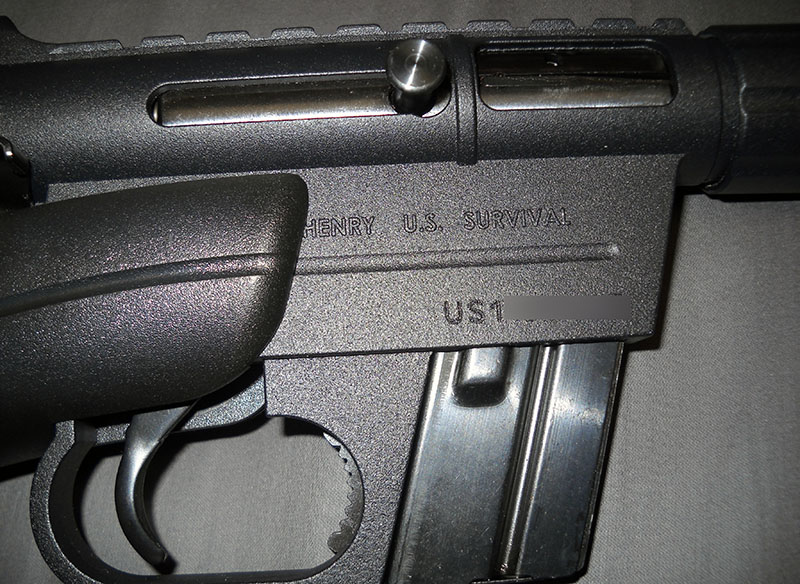
Apart from its nifty takedown function, the AR-7 is not a terribly exciting or innovative rifle (even for 1959), mechanically speaking. It's a simple straight-blowback .22 rimfire semiauto, without any of the modern amenities one tends to expect from such a thing. The bolt does not lock open on an empty magazine, nor is there any way of locking it open manually other than by wedging something into the ejection port. (This is enough to get it banned from some shooting ranges.) There is also a very simple works/doesn't work safety, which can only be put on when the action is cocked.
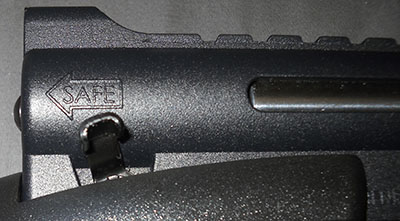
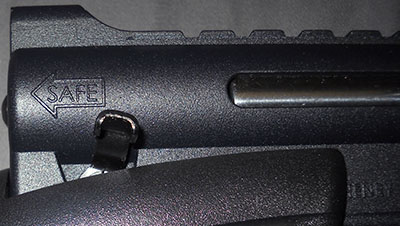
Since the AR-7 has to withstand quite minor pressures and is anyway intended to be lightweight, most of it is made from aluminum. In its Henry guise, it comes with two 8-round magazines, though it can actually be stowed with three (there are two compartments for spares and it can be put away with one in it, an innovation for which Henry's people must be given due credit). Other manufacturers, at various times, have made 10- and 15-round magazines, though I don't know if they're all interchangeable across the rifle's various makers over the years. I would hope they are? But you can never make that assumption with these things.
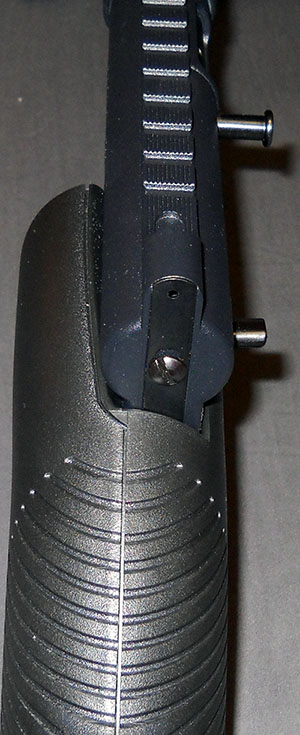
To me, at least, the AR-7's ergonomics are not the best; the semi-pistol-grip part of the buttstock is too fat to be really comfortable, presumably because it has to be able to accommodate the mount for the receiver. You will note in the photo above that said mount is asymmetrical, favoring the right-handed shooter, although that in itself is not as big a problem as it looks like it might be for a lefty. (It's certainly nowhere near as egregious as, for instance, handgun grips that have a rest for the right-handed shooter's thumb built into them.) It also doesn't have any sort of forestock, so you just have to kind of prop your off hand under the front of the receiver and hope for the best.
Accuracy-wise, with its short barrel and weird ergo, hoping for the best is probably about all you can expect from this rifle. Sights are one step above completely basic, since the AR-7 sports an aperture rear sight rather than a simple notch, but it's still not terribly elaborate—although the Henry version does have a front sight blade made from the same bright orange plastic as the interior structure of the stock, which helps.
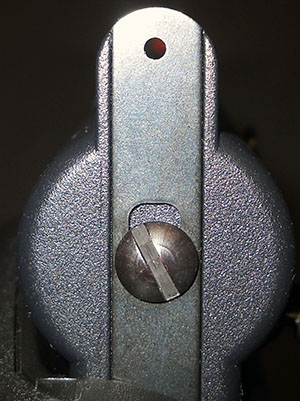
(I should note that the Henry version also has a rail for attaching an optical sight, although obviously you can't store it in the stock with one of those on it, so I question the utility.)
It's a .22 LR rimfire, so it's not going to be winning any range or knockdown power competitions either. Still, if you're stranded in the wilderness and need to kill something small and furry so you can eat it, I have no doubt it would get the job done with enough skill. Defensively it's not going to be worth very much, although I suppose like any firearm it can make a loud noise, which in some situations is really all you need.
Personally, though, I think the principal appeal these little rifles have is that they're kinda cool. They've got that whole pack-up-in-the-stock thing going on, so that—as the kid at Dick's Sporting Goods I bought this one noted while putting it together for my inspection—it makes you feel like an assassin. (He sort of ruined the effect by installing the barrel upside down, which is not something you can really picture Golgo 13 doing.)
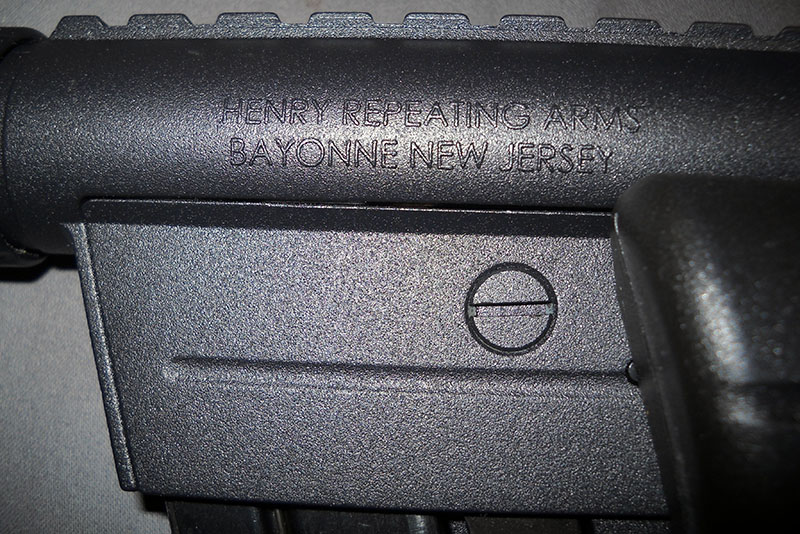
James Bond uses one of these to shoot down a helicopter in the 1963 film version of From Russia With Love. In the introductory scene for Bond's equipment (the late Desmond Llewelyn's first appearance in the series), Q (although he does call it an AR-7) mistakenly identifies it as a "folding sniper's rifle, point-two-five calibre." (Of those four things, only one is true.) Amusingly, it's included as part of the "ordinary black leather case" Q is demonstrating in that scene, all the other special features of which are disguised. The presence of a mysteriously disembodied rifle stock within said ordinary case is not remarked upon.
The prop gun in From Russia With Love is one of the original ArmaLites, with the smooth brown fiberglass stock meant to look vaguely woodlike. They also made them in a sort of decorative swirl pseudo-camouflage scheme. Later ones, like the Charter version, were black fiberglass or smooth black plastic instead. The Henry version's stock has a pebbled finish that's probably meant to match the matte black paint on the gun's aluminum parts, with the interior plastic parts in safety orange, and "U.S. SURVIVAL" molded in a slightly twee Old-Timey Military Stencil font. I don't particularly like the effect; it feels kind of cheap and nasty, like the interior plastics in inexpensive cars.
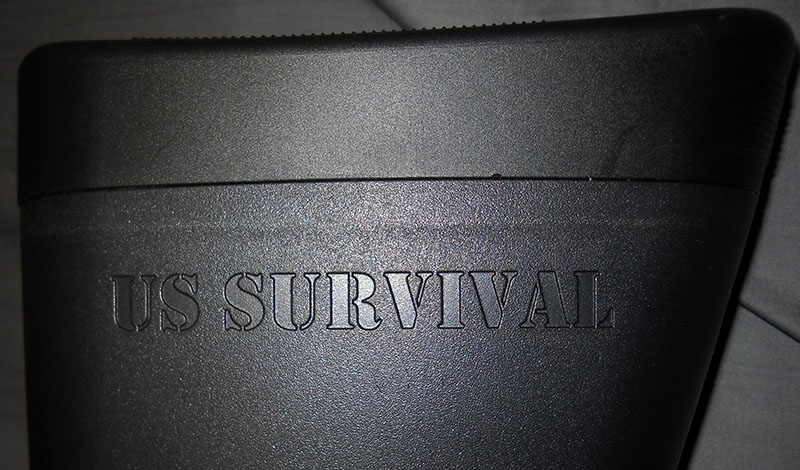
In fact, the whole rifle kind of feels that way, like it was built down to a price point by the fifth or sixth company to own the tooling (which is exactly the case). It doesn't feel flimsy to the point of being unsafe or anything, but it isn't as substantial as my instincts tell me a serious firearm should feel. Of course, it feels "budget" because it is—it wasn't very expensive at all—but I can't help feeling like I probably should've held off and tried to scrounge up an original instead.
--G.